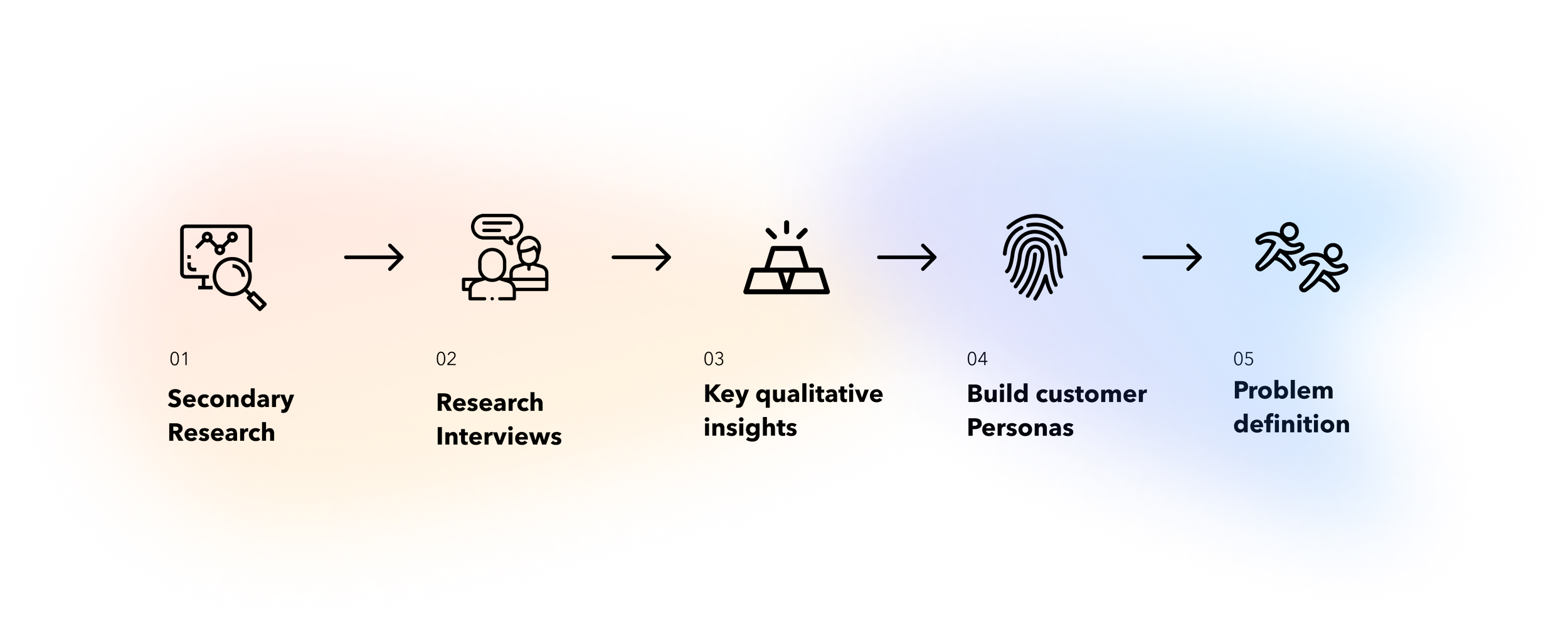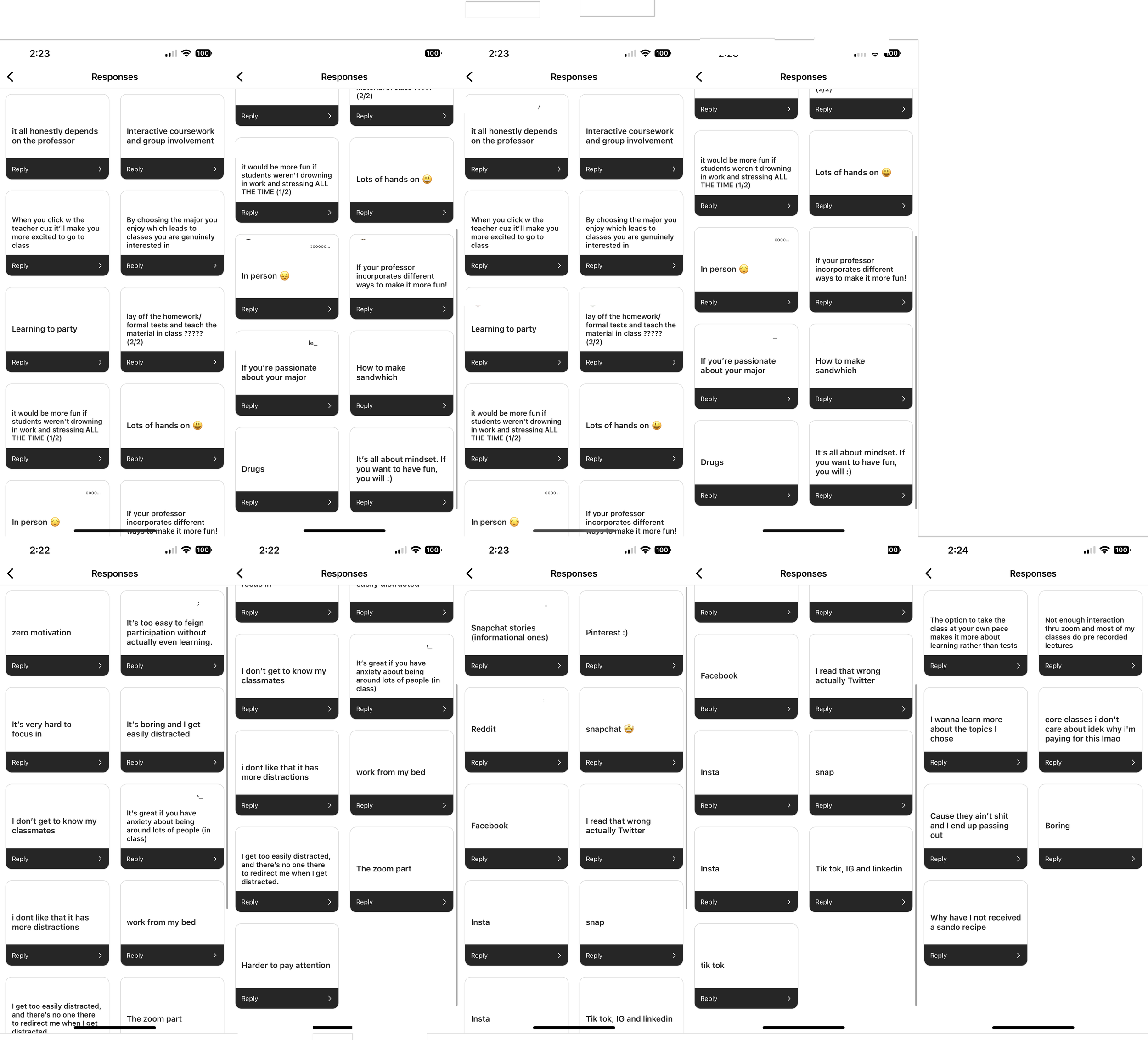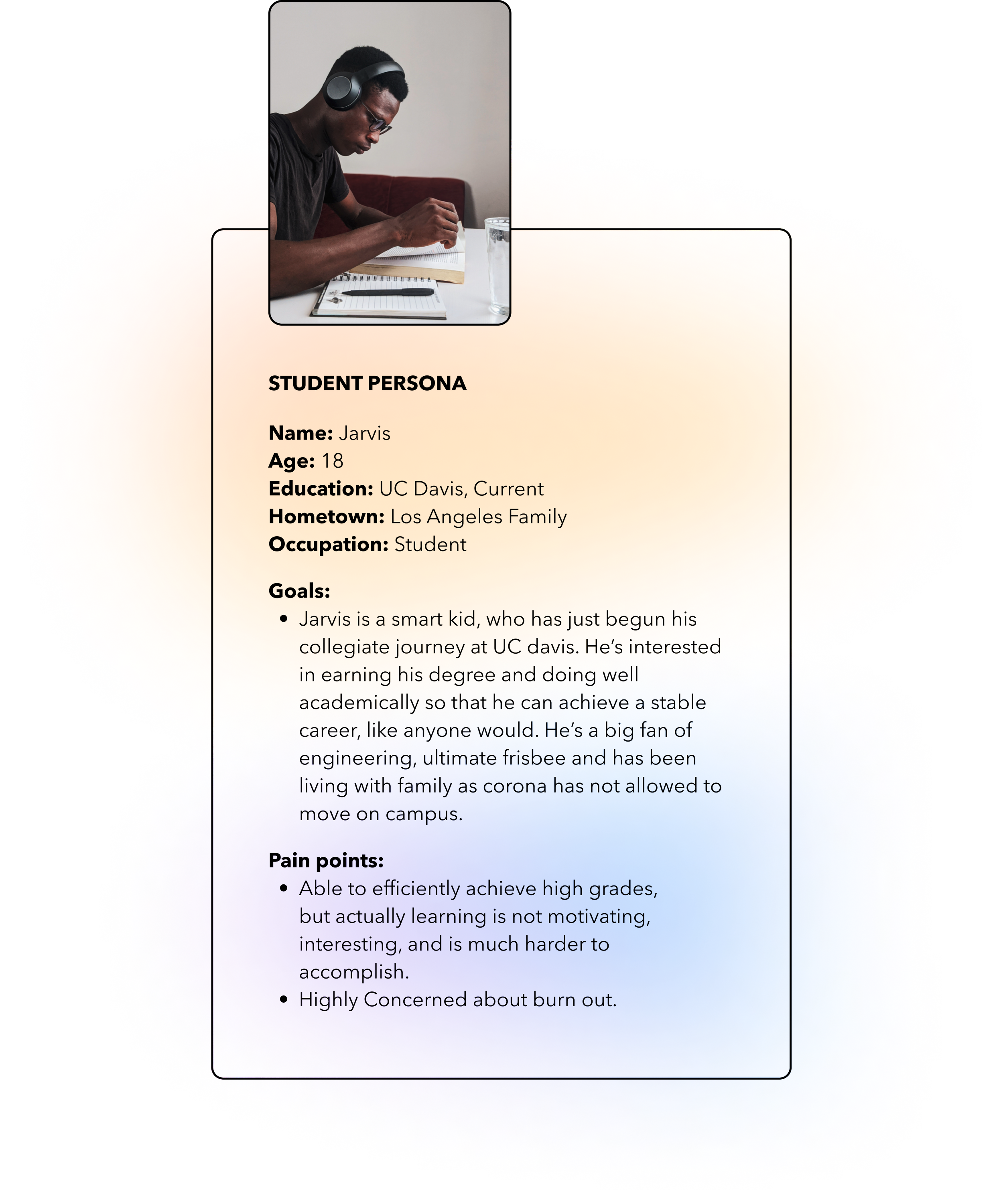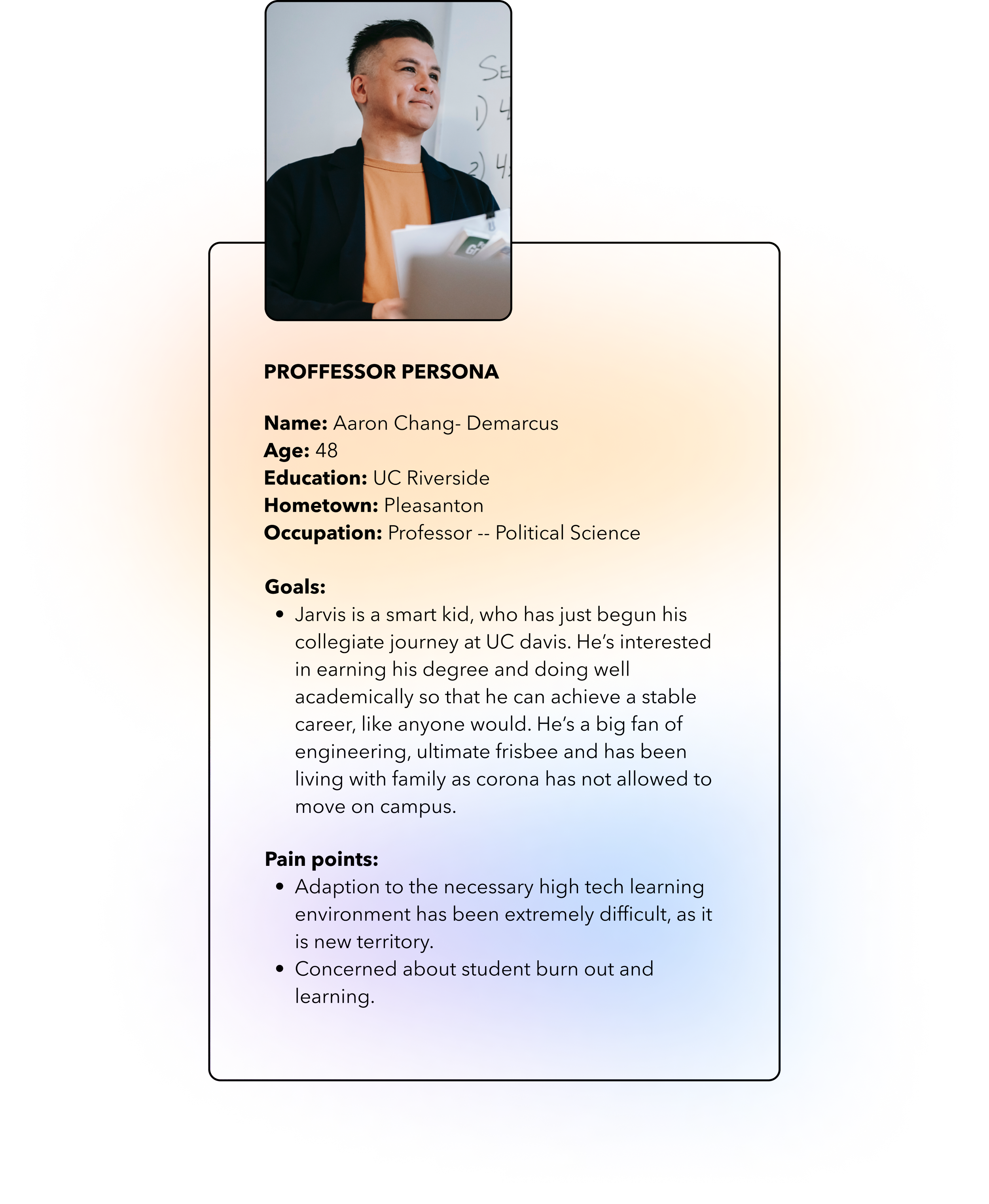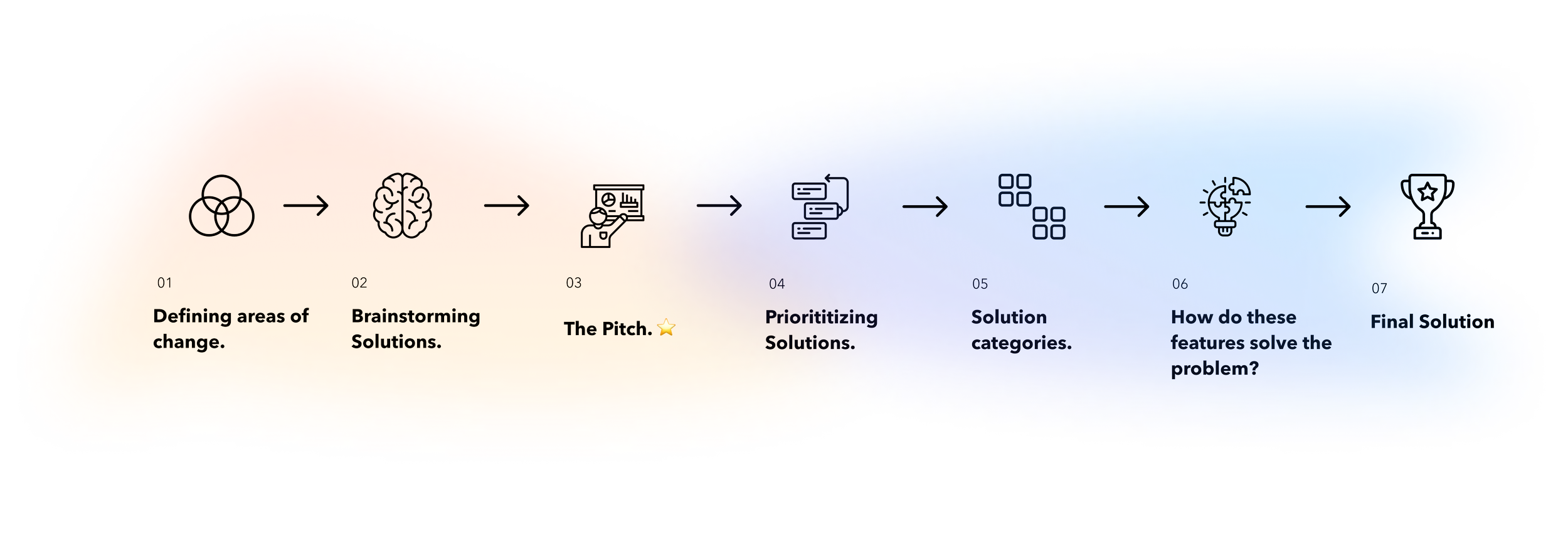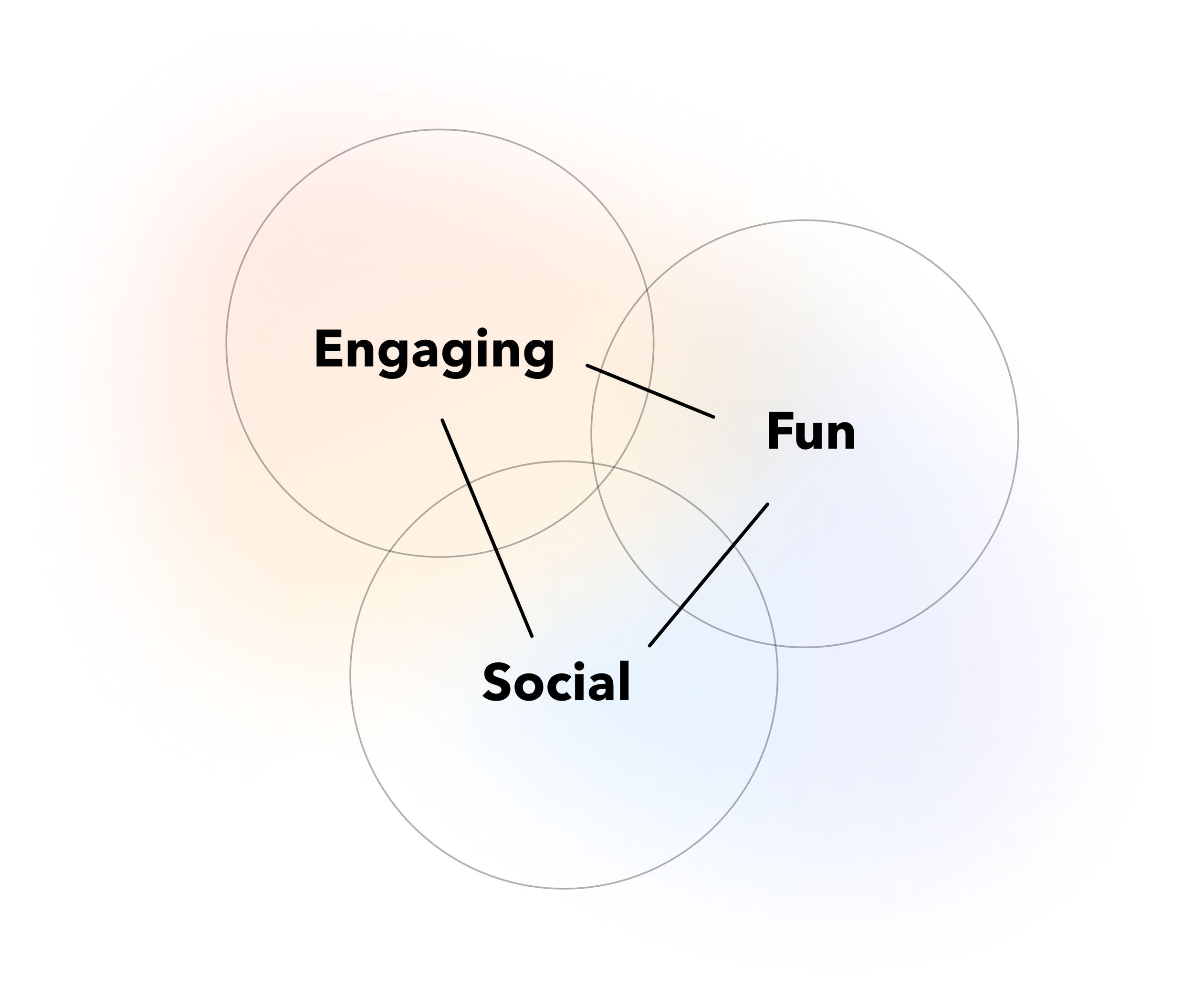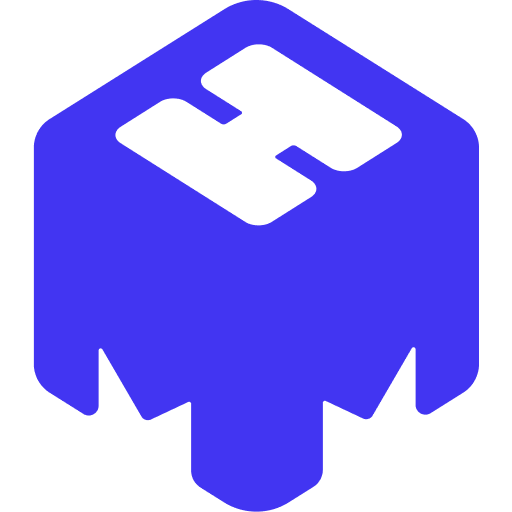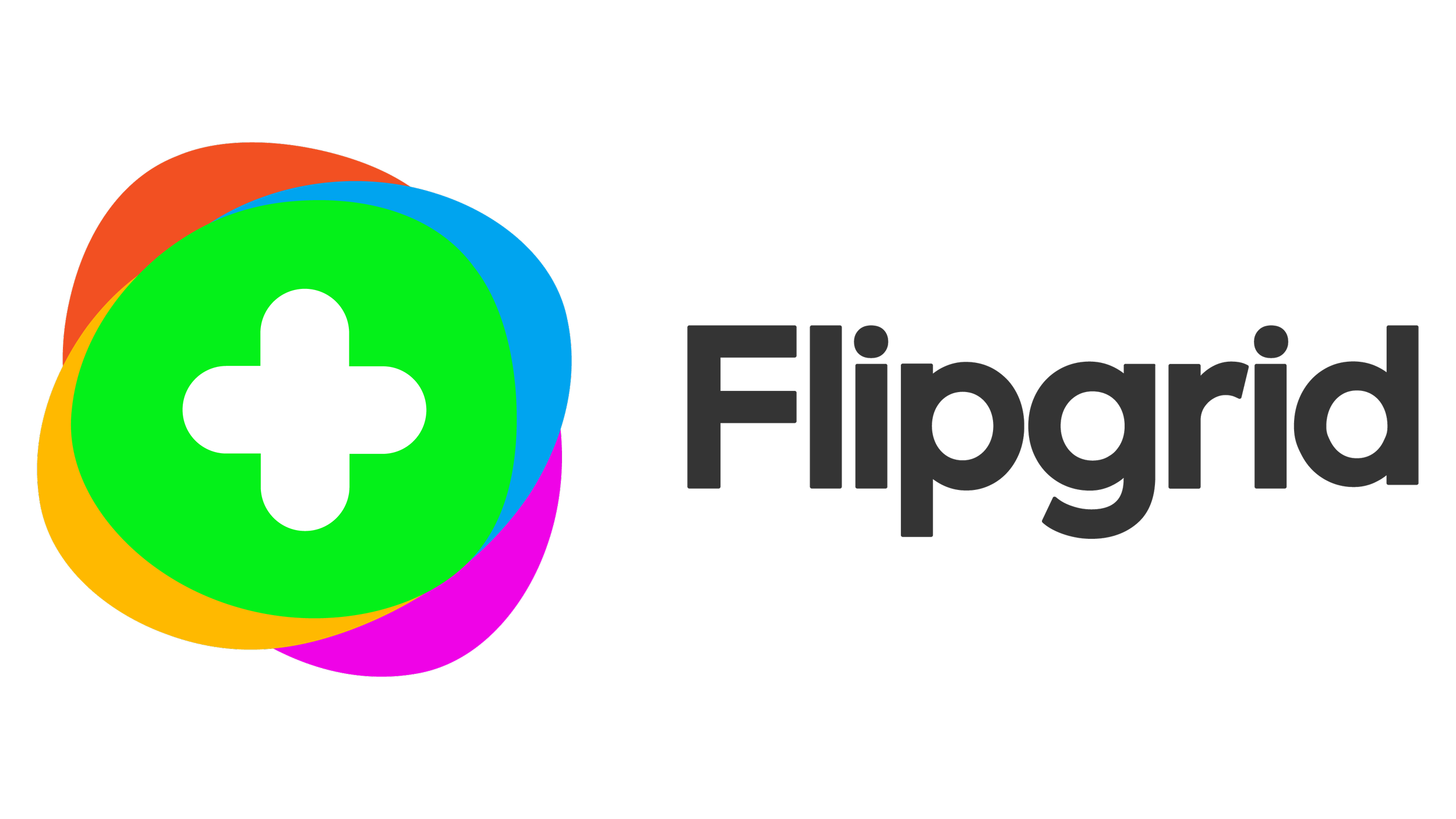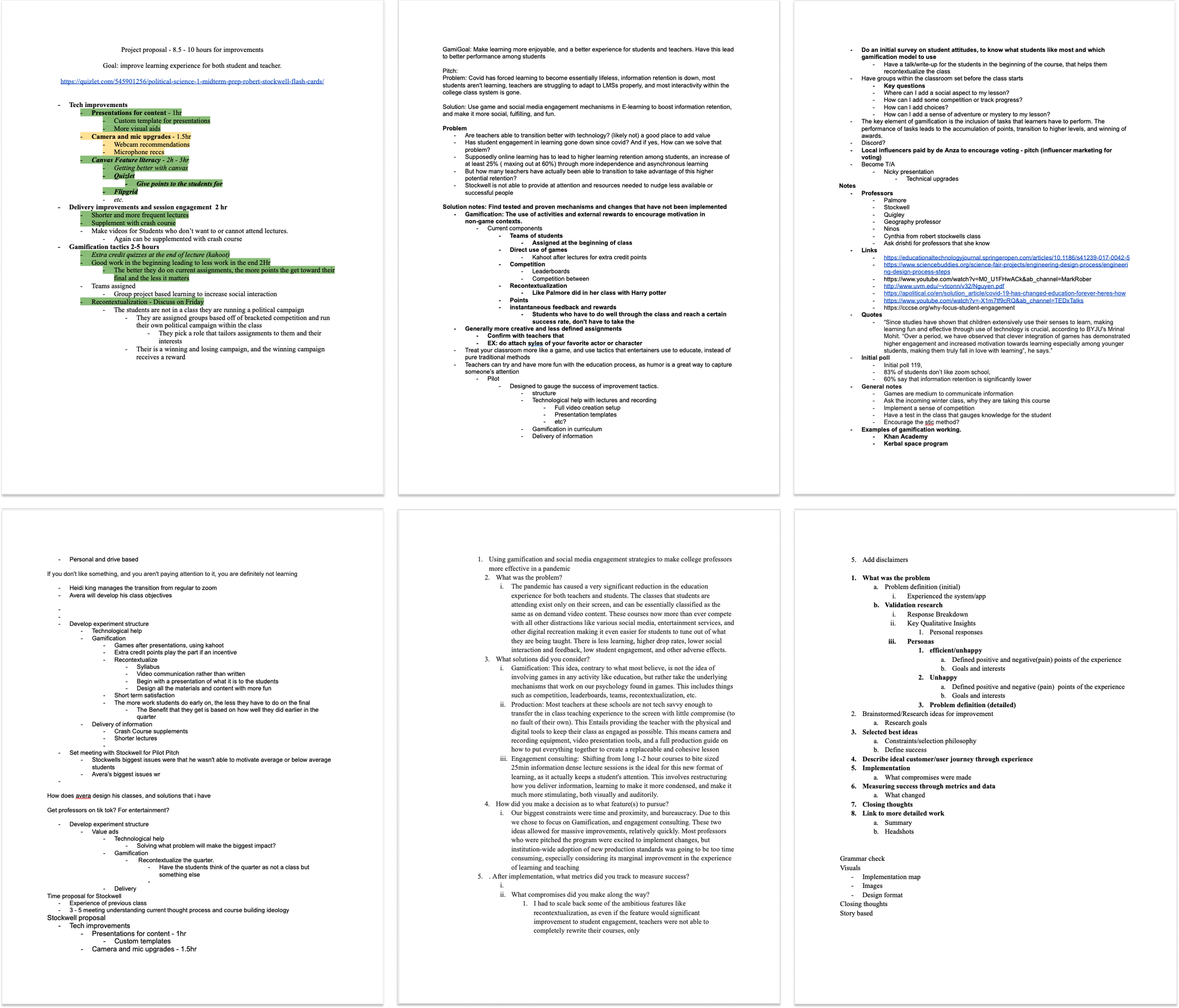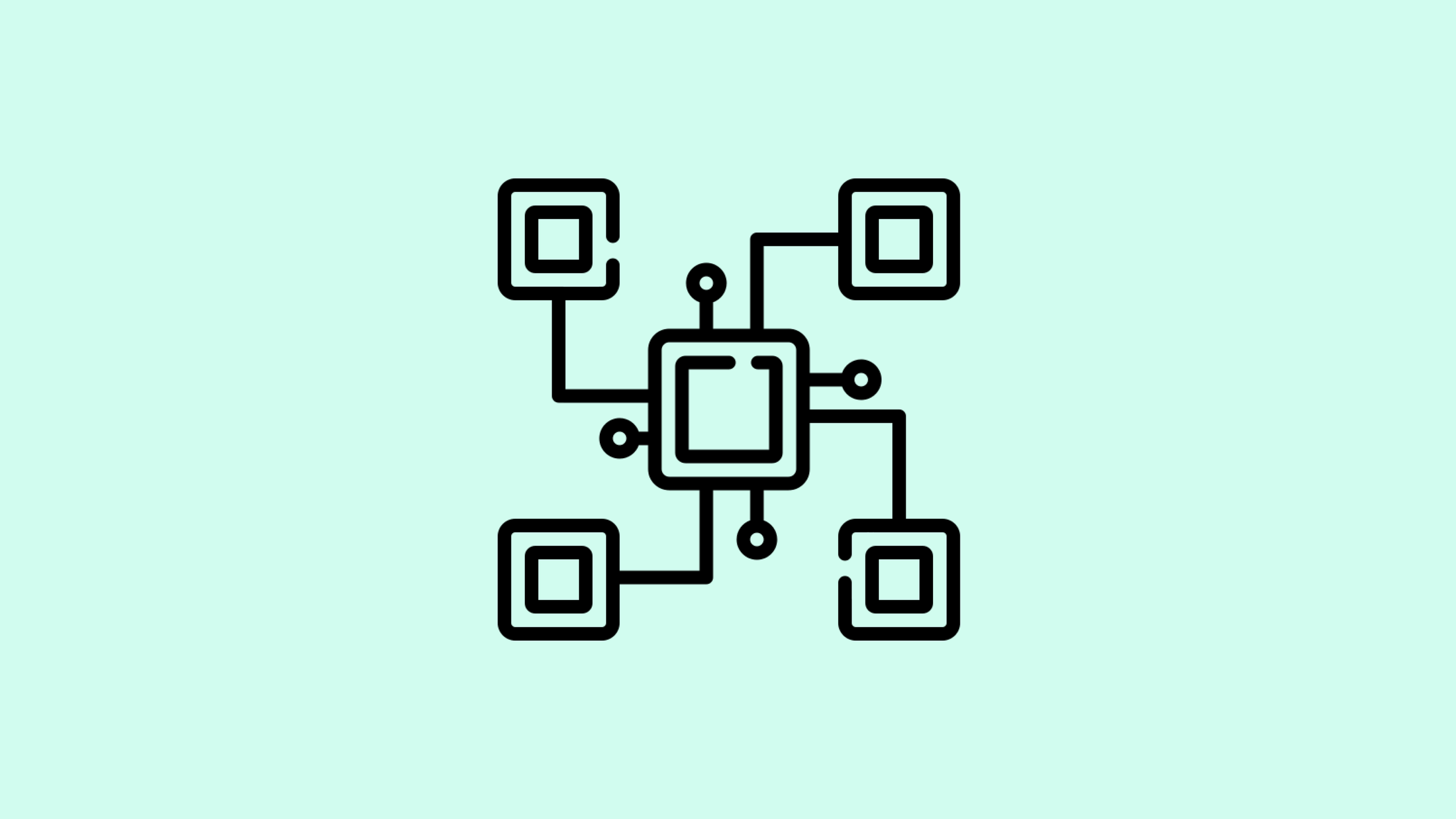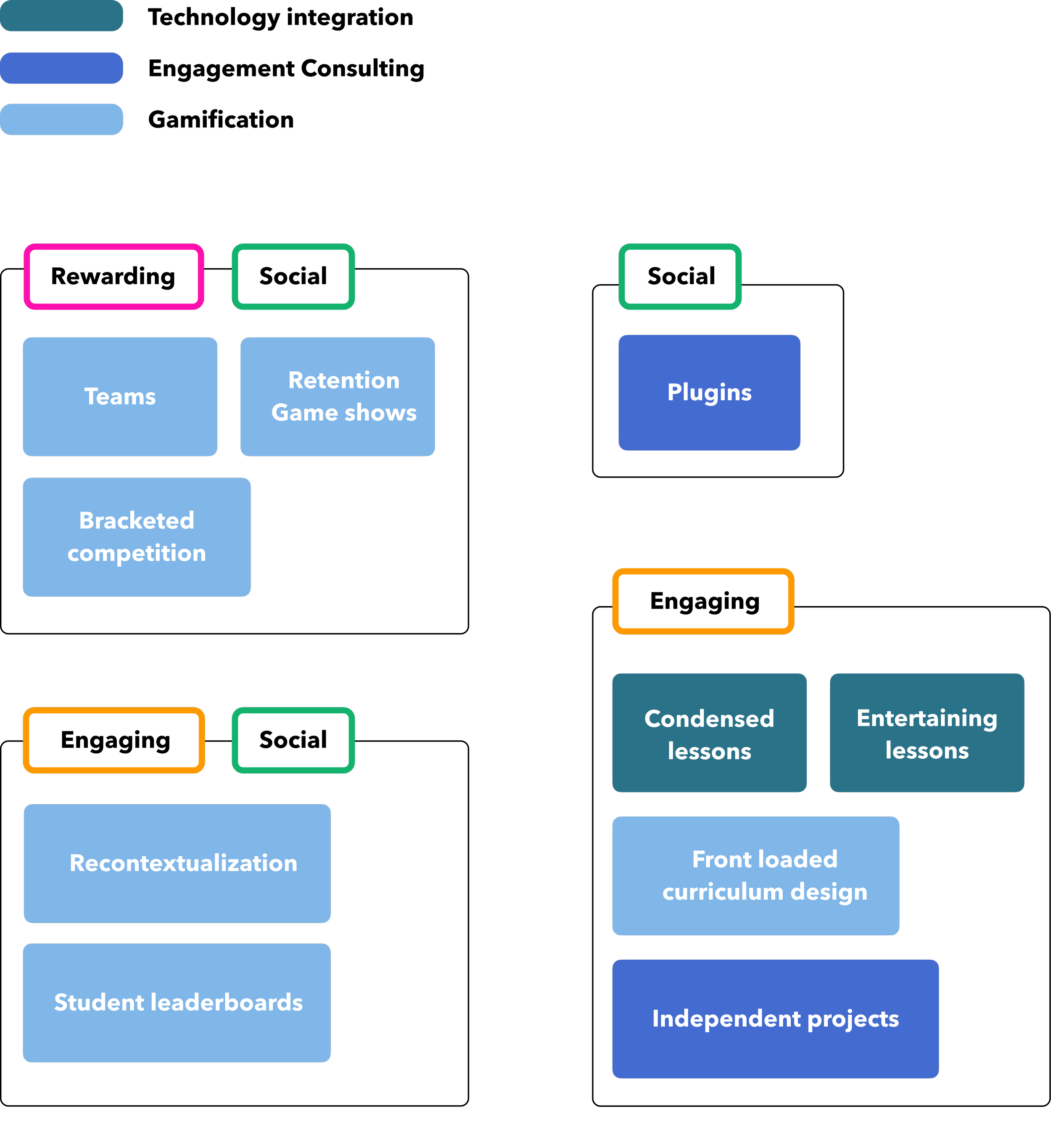
I created and led a pilot program to revitalize the digital education experience at the De Anza college political science department, helping 125 students and the entire faculty.
Overview
Project type: Internship
Role: Project leader
Timeline: 6 months
Deliverables: Research, Processes, Copy, Implementation.
Collaboration: I worked closely with Professor Robert D. Stockwell. and 2 other faculty of the De Anza Poli sci dept.
Research and Design Challenges:
Getting students more invested in their learning and not just the grade.
Recreating an engaging classroom environment virtually.
Accomplish this in 1 academic quarter.
TLDR:
Problem: The pandemic devastated the education experience in terms of engagement, comprehension, and satisfaction. I set out to build a solution for this problem at my college.
Solution: Through research in academic papers, interviews, and a solid pitch, I convinced 3 of my professors to let me re-work their curriculum to revitalize our classroom experience.
With the aid of my professors, I created and tested a 3-month pilot program centered around gamification and social media engagement psychology that was provided to the De-Anza humanities department for adoption.
The program lead to student grades increasing 24%, lecture attendance increasing 33%, professor satisfaction increasing 66%, student drop rate decreasing 20%, student satisfaction increasing 36%, and time spent on learning platforms increasing by 27%.
But here are all the details…
Chapter 1: Defining the problem.
The process:
How bad is it?
1. Purposeful secondary research
I was so dissatisfied with my college education experience. Assignments and work felt boring and engagement was difficult. I was able to do well but I was nowhere near as stimulated by my academics online as I was in person.
Although this was a personal problem, I could not act on my feelings, I needed supporting data.
To get a general pulse on how this issue was affecting college students. I conducted secondary research by looking into a collection of academic papers and news articles to see how the pandemic was affecting education.
I found this issue was far from isolated to me, and there was a high lack of engagement in the learning experiences linked to the pandemic. This gave me the data I needed to pursue formal validation in the form of primary research
2. Diving deeper with primary research:
The education experience during the pandemic couldn’t have only been worse for me, to understand what my college was going through, I conducted a survey of 109 students and 12 professors to understand how everyone else’s experience.
I did this in a set of Instagram polls, Google forms, then used those responses to ask more detailed questions in individual interviews. My guiding thesis for these questions was, how has the experience changed and is it less rewarding?
This led to me uncovering that:
83%
Of students were extremely unhappy with their learning experience.
60%
Of students reported significantly less information retention of material.
75%
Of professors reported struggles with engaging students online as they did in the classroom.

3. Developing key qualitative insights
What did I make of this research?
01
Students were having an extremely difficult time paying attention to courses.
04
Student motivation to succeed in a learning environment has drastically reduced.
02
Some students are finding the pandemic education experience lifeless, but much more efficient.
05
Teachers are unable to adapt fast enough to replicate the college experience online with the efficacy of in-person learning.
03
Students were having significant challenges with comprehension of material.
4. Developing the personas
Who exactly is facing these challenges?
In order to synthesize my findings and identify emerging user patterns, I created two personas to represent different types of dissatisfied, individuals that are struggling in the pandemic learning environment. Both of these personas were equally important as solving for students makes the professor’s job easier and more fulfilling.
5. Final problem definition
Now what exactly is the problem..
The Pandemic learning experience is considerably worse than normal for both teachers and students because of low-quality adaption, repetitive work, low social interaction, and disengaged students.
Students are less motivated and pay much less attention to school, resulting in less learning, lower comprehension, lower information retention, and gross dissatisfaction with the college experience.
Teachers are not tech-savvy enough to replicate their courses online with little compromise, resulting in higher drop rates, low student engagement, and worse student performance.
Chapter 2: building a solution
The process:
1. Defining areas of change
What exactly am I going to change?
Engagement
The learning experience needs to be far more engaging. The current learning system is competing with all other screens and content and needs to win out among them (replace this)
Rewarding Users
For students to put in the time needed to really learn, the learning experience needs to be more rewarding and motivating and incentivize students to complete the course. (change).
Social
individuals need avenues to connect with their peers and instructors, as it is a foundational part of the college experience

2.Brainstorming solutions:
How do I rework the classroom?
My approach: Today’s youth spend lots of time on many social platforms like YouTube and Tik Tok. Here content is free, and the content creators’ job is to only engage their viewers— this skill is essentially their livelihood.
Knowing this, I searched for solutions in academic papers about students engagement, and dissected the techniques that successful YouTubers use to retain an audience’s attention. here is what I came up with:
01. Gamification
Gamification takes advantage of the fundamental mechanisms in games that work on our psychology. This includes concepts like competition, leaderboards, teams, recontextualization, direct game integration, etc.
02. Content Production:
Content production entails providing the teacher with the physical and digital tools to keep their class as engaged as possible. This means camera and recording equipment, video presentation tools, and a full production guide on how to put everything together to create a replicable and cohesive lesson.
03. Engagement Consulting
Engagement Consulting helps educators Shift from long 1-2 hour courses to bite-sized 25min information-dense lectures, as it actually keeps a student's attention amongst all distractions. This involves restructuring how you deliver information, learning to make it more condensed and stimulating, both visually and auditorily.
04. Technology Integration:
Integrate external technologies in the LMS (learning management system) like Flipgrid, Quizlet, and interactive presentation tools like “mmhmm”, so students have more engaging ways to independently work with course content.
3.The pitch
Convincing the Department
Implementation of these concepts required access to the development of a professor’s curriculum.
I built these insights into an initiative that took the De Anza Political science department, and pitched it to 3 professors.
They graciously agreed to let me rework their curriculum and incorporate my ideas over a Quarter-long period to test them for improvement. Within the test group, my solutions were set to affect a total of 125 students.
3. Prioritizing solutions against constraints
What are we actually doing?
My approach: Now that I had pitched my professors, I brought my solutions to them and we worked through the ideas that we realistically implement under our constraints. We sat down and filtered my ideas through our three key criteria, listed here:
Proximity: Any solution that we enable for this project needs to be completely managed and implemented remotely, In-person contact is prohibited.
Time: Making an impact with this project is time sensitive, as there will only be certain quarters where learning is remote and the learning experience is worse. The project needs to be up and running to be in winter quarter of 2021
Efficiency: I was looking for ideas that would allow massive improvements, relatively quickly. Institution-wide adoption of new lecture production standards was going to be too time-consuming, especially considering its marginal improvement in the experience of learning and teaching. For this reason, content production was out.
These design constraints made it clear to me that producing videos differently for teachers would not be viable as I would need much more direct contact and interaction with the professors I worked with. Due to this I chose not to make producing content a part of my solution.
After this exercise, here are the solution categories and specific changes we decided on implementing in the course curriculums:
01. Gamification
-
after the lesson, students would enter the game platform and be quizzed on the material that they just were exposed to. This is done to increase retention by incentivizing them to pay attention and retrieve information from their memory
-
This is meant to use competition to motivate students, but not overwhelm them, by having them compete with people who have graded only marginally higher than theirs
-
Incentivize students to put in more effort in the beginning of the course by relaxing course requirements to those students who do well in the first 25% of the course. They receive reward like optional finals etc. The course progresses regularly for all other students.
-
Transform your class into a battlefield or political campaign. Recontextualization is running the education experience like a simulation where students play active roles that correlate with their academic responsibilities
-
This is a system where students are able to see how they are competing with the entire class. this is reserved for higher preforming classes.
-
Have students collaborate on quarter wide projects, and compete with other student through student leaderboards
02.Tech integrations
-
Use interactive presentation tools, animations, and other visual tools to hold attention when delivering information. This makes the lesson far more captivating which is incredibly important considering the change of environment from a highly stimulating in person experience to the distraction prone laptop on a desk.
-
Integrate external technologies in the LMS (learning management system like Flipgrid and Quizlet so students have more engaging ways to independently work with course content. These tools enable students to prove information comprehension in different ways and let them study in ways where they learn best.
03. Engagement consulting
-
Have students design their own projects using new media. Built around mediums they are familiar with and prefer to use. This controlled flexibility allows for their investment in their learning to increase as they can explore the subject in a manner that is preferable to them. Ex: Create a mini-documentary, instead of writing a research paper.
-
Construct a lesson where core concepts are addressed efficiently in the beginning of the lesson, then after students would enter a game platform and be quizzed on the material that they just were exposed to. This is done to increase retention by incentivizing them to pay attention and retrieve information from their memory that was provided in a longer weekly lesson.
6. How do these features actually solve the problem:
Are we there yet?
The diagram represents each research concept and what part of the problem it tackles, as the students needed more socialization, engagement, and a new reward system.
Chapter 3: Impact & The Retrospective
How much progress did we make?
After the quarter ended, I wanted to quantify the impact of our project. I decided to measure it with a post-pilot survey through Google Forms, given to 125 students and 3 professors, and here are the results:
Student grades up 24%
Lecture attendance was up 33%
Professor satisfaction was up 66%
80% of features widely adopted
Student drop rate down 20%
Student satisfaction is up 36%
Time spent on learning platforms is up 27%
My thoughts after the project:
For the first time in my life I felt like I was aimlessly floating in limbo, without clear purpose. The pandemic upended my college experience in 2020, leaving me stranded in a deeply compromised learning environment. Consequently, this project was not only something I was obsessive over because of results, it was also something that kept my mind stimulated.
As my professors and I devoted three months to incorporating my ideas into their coursework, I learned so much about their lives and it was a privilege to be able to connect with my mentors and advisors so personally.
It was exceptionally satisfying to have been able to provide students with more creative control in and inspire healthy competition- as even before the research these ideas were core to my education experience being so memorable.
When I lost the in-person college experience at De Anza, a feeling of instability grew within me. However, I channeled this unease into action.—With my classmates and my professors, I was able to deploy my knowledge and skills to help us escape the limbo that we shared, toward a renewed sense of purpose.
Thank you for reading :)

